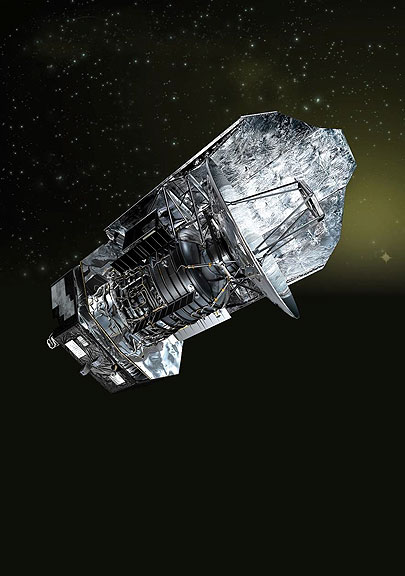
[SatNews] This scientific observatory had a service life of nearly four years, exceeding its required lifetime by 10 percent.
The Herschel satellite, part of the joint scientific mission, Herschel-Planck, with Thales Alenia Space as prime contractor, completed its mission today. A high-tech jewel, considered, with Planck, one of the most complex satellites ever constructed in Europe, Herschel was built by a Thales Alenia Space-led industrial team on behalf of the European Space Agency (ESA). Herschel was launched on May 14, 2009 along with the Planck satellite. This scientific observatory had a service life of nearly four years, exceeding its required lifetime by 10 percent.

Herschel was dedicated to the study of the cold part of the Universe. It was equipped with a telescope, featuring a main mirror 3.5 meters in diameter, giving it a surface area twice that of the mirror on the Hubble space telescope. This was the first space observatory to cover the spectrum between 55 and 672 µm (far infrared and submillimetric radiation), used to detect radiating objects at temperatures between 5 and 50K (-268/-223°C). Herschel was positioned in a large orbit around the L2 point which is 1.5 million kilometers from the Earth, and was the first space telescope to see the emission from cold cosmic dust, thus enabling it to observe the "fossil light" remaining from some of the oldest events in the Universe. Along with Planck, this powerful scientific observatory revolutionized modern astronomy by giving scientists a better understanding of distant parts of the Universe, as well as our own Solar System.
While Planck achieved a first in taking a "picture" of the Universe as it was 380,000 years after the Big Bang, some 13.8 billion years ago, Herschel allowed scientists to analyze and better understand changes in the life cycle of stars, galaxies and other major structures in our Universe. Still contributing well beyond their respective lifetimes, the data from Herschel and Planck will be examined and analyzed by scientists and astronomers for years to come.
"The Herschel satellite has perfectly performed its mission flawlessly, exceeding its initial technical specifications," said Jean-Jacques Juillet, Director of European Programs at Thales Alenia Space. "We are delighted to have successfully completed this very ambitious mission, still unprecedented to date, as is Planck. Our next challenge will be the two Exomars missions (2016 and 2018), featuring a probe that will take samples up to 2 meters deep in the Martian soil—a world first at this depth."

